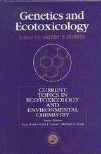Papers in the Biological Sciences

Valery Forbes Publications
Document Type
Article
Date of this Version
2010
Abstract
The relationships between population growth rate and the life-cycle traits contributing to it are nonlinear and variable. This has made it difficult for ecologists to consistently predict changes in population dynamics from observations on changes in life-cycle traits. We show that traits having a high sensitivity to chemical toxicants tend to have a low elasticity, meaning that changes in them have a relatively low impact on population growth rate, compared to other life-cycle traits. This makes evolutionary sense in that there should be selection against variability in population growth rate. In particular, we found that fecundity was generally more sensitive to chemical stress than was juvenile or adult survival or time to first reproduction, whereas fecundity typically had a lower elasticity than the other life-cycle traits. Similar relationships have been recorded in field populations for a wide range of taxa, but the conclusions were necessarily more tentative because stochastic effects and confounding variables could not be excluded. Better knowledge of these relationships can be used to optimize population management and protection strategies and to increase understanding of the drivers of population dynamics.


Comments
Published in Ecological Applications, 20(5), 2010, pp. 1449–1455
Copyright 2010 by the Ecological Society of America. Used by permission.